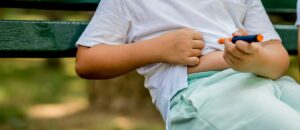School nurses are often some of the strongest advocates for appropriate, accessible, and timely oral health care for children. They frequently promote community partnerships with local dentists, help to establish and support dental care in school-based health clinics, and assist in coordinating care for students in need. Treating students who visit the school health office complaining of mouth trauma, tooth pain, or orthodontic concerns, however, can be an area many nurses coming into the school setting don’t have much experience handling. While consultation with a dentist is recommended for all dental trauma, administering dental first aid in the school health office can provide significant pain relief, comfort from irritation, and essential care that reduces the risk of future complications. In addition to reviewing some common dental-related complaints below, this convenient poster can act as a quick reference guide for those days when you’re juggling three ten students at a time.
Toothaches
- Rinse with warm salt water
- Use dental floss to remove any debris trapped between teeth
- Assess gum tissue for signs of an abscessed tooth (resembles a pimple)
- Administer an OTC pain relieving medication, if appropriate and authorized
- A cold compress can also be applied to the outside of the cheek for 20 minutes
Canker Sores
- The most common type of mouth ulcers, canker sores appear as white or yellow patchy lesions on the inner cheeks, lips, or gums
- Try a mouthwash of 1 teaspoon liquid antacid or honey
- Administer Benzocaine*, as well as an OTC pain relieving medication for temporary relief, if appropriate and authorized (*be aware of benzocaine allergies)
- Ensure adequate hydration
Fever Blisters (Cold Sores)
- Often appear on the outside of the lips as small, red vesicles
- Refer to primary care provider
- Applying an OTC medication like Abreva or Orajel for cold sores may provide temporary relief
Broken/Displaced Tooth
- Apply direct pressure using a gauze sponge to control bleeding
- Dental wax may be used to cover any sharp edges of broken teeth
- Do not attempt to realign any misplaced teeth
- A cold compress can be applied to the outside of the cheek/mouth
- Refer immediately to a dentist for a displaced or fractured tooth (fracture is down to the pulp and very painful) and same day for a chipped tooth (minor fracture where a small corner of the tooth is missing and no pain is reported)
Knocked out Permanent Tooth
- Requires immediate reimplantation (within 2 hours)--refer emergently to a dentist
- Place the tooth in a balanced salt solution
- If a salt solution is not available, milk or saliva is ok
- Control any bleeding by having the student gently bite down on folded gauze
- If dental care is not immediately available, the tooth should be replaced in the socket facing the correct way and the student should gently bite down on folded gauze to stabilize the tooth
Protruding Orthodontic Wire
- Using a tongue depressor or cotton swab, gently bend the wire away from any soft tissue to reduce irritation
- If bending is not possible, use soft wax to cover any areas of discomfort
- Refer to the orthodontist for further evaluation and care
Oral injuries and acute dental pain occur frequently in children. To efficiently and effectively care for all those tooth-related visits to the school nurse, it may be helpful to keep a separate oral health first aid kit in the school nurse’s office–build yours with MacGill’s Dental First Aid Kit Shopping List.





